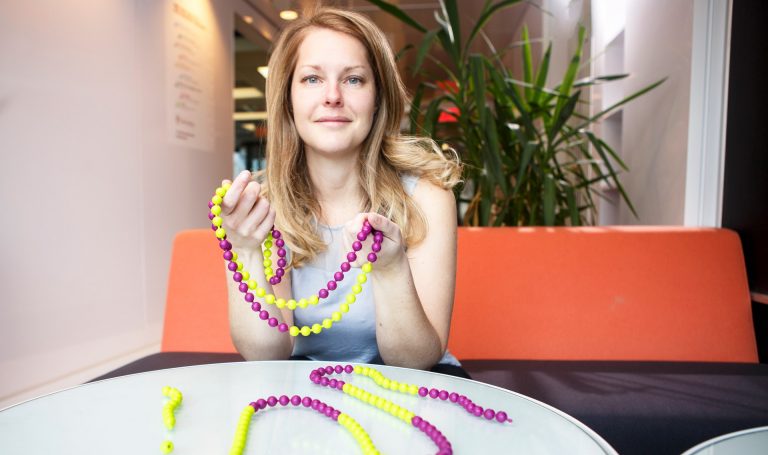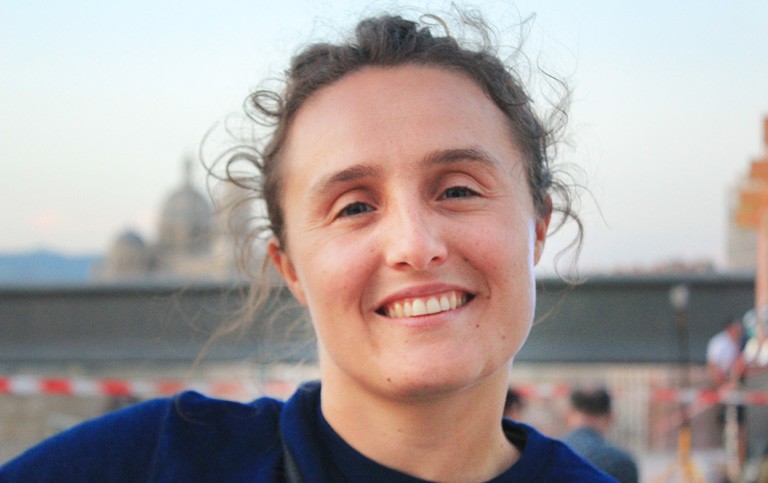2 Concordia researchers receive Banting Postdoctoral Fellowships

Anne Lafay and Élise Olmedo are the latest Concordia recipients of the Banting Postdoctoral Fellowship.
The prestigious Government of Canada-sponsored award goes to a select group of national and international academics whose research is considered to have transformational potential for society. Recipients receive $70,000 per year over two years.
Seventy postdocs from universities around the world are selected for the fellowship annually. The aim is to increase the number of highly qualified research personnel in Canada.
Mathematics learning disabilities and the mental number line
Lafay is a speech language pathologist and Horizon Postdoctoral Fellow in the Department of Education, working under education professor Helena Osana. She will be looking into the use of manipulative objects in math teaching for children — both typically developing (TD) and those with mathematics learning disabilities (MLD).
Manipulative objects such as base 10 blocks are used in primary schools to spatially represent numbers and aid math cognition in children.
“When we think of numbers, we visualize them on a horizontal number line, from left to right, lowest to highest,” she says.
However, the manipulatives employed in classrooms now are non-linear, comprised of cube shapes that are stacked or built up.
“For most of us it’s not a problem, but for kids with MLD, it can be,” Lafay explains.
“My hypothesis is, if you use manipulatives that better represent the mental number line, it will be easier for them to learn and construct numbers.”
Lafay is working with Concordia’s Mathematics Teaching and Learning Lab. She will conduct a number of clinical studies with first-graders from public schools by introducing different kinds of manipulatives and observing which work best for them.
She hopes to demonstrate that number line manipulatives will outperform the non-linear ones currently in use at schools, potentially resulting in better math cognition for all children.
“I would love it if public schools could improve through better evidence-based practices,” she says.
 Élise Olmedo: “My project illustrates daily lived space in a non-traditional way to give voice to marginalized peoples.”
Élise Olmedo: “My project illustrates daily lived space in a non-traditional way to give voice to marginalized peoples.”
Greater compassion through sensibility mapping
Olmedo is a geographer from the universities of Aix-Marseille and Paris 1 Panthéon-Sorbonne. She will be joining Sébastien Caquard, associate professor of geography, planning and environment, at the Centre for Oral History and Digital Storytelling (COHDS) to help document the life stories of Rwandan refugees.
Olmedo will be capturing the narratives and life experiences of the refugees through a new technique called sensibility mapping.
Known as cartographie sensible in French, sensibility mapping exists at the intersection of cartography and creative self-expression.
“It’s a way to include emotions and sensations in mapping to have more qualitative data. Traditional mapping is often a very neutral, bird’s-eye view of things. It’s difficult with this perspective to speak about subjective views or lives,” Olmedo explains.
“Sensibility mapping is an alternative way to document people’s stories. The method seeks to develop different views and visualizations to speak about lived space in general.”
Olmedo will first compile the narratives of 30 Rwandan participants in a database at the COHDS and will then map them using the AtlasCine 3 application from Concordia’s GeoMedia lab.
The maps are considered a more ethical way of documenting the experiences of people who’ve gone through traumatic events. “The goal is to collaborate with the participants,” Olmedo adds.
“We hope the end result is a map that doesn’t just focus on the violence in their past or the migration process. It’s about illustrating daily lived space in a non-traditional way, thereby giving a better voice to marginalized peoples.”
Find out more about Concordia’s Centre for Oral History and Digital Storytelling and Department of Education.


